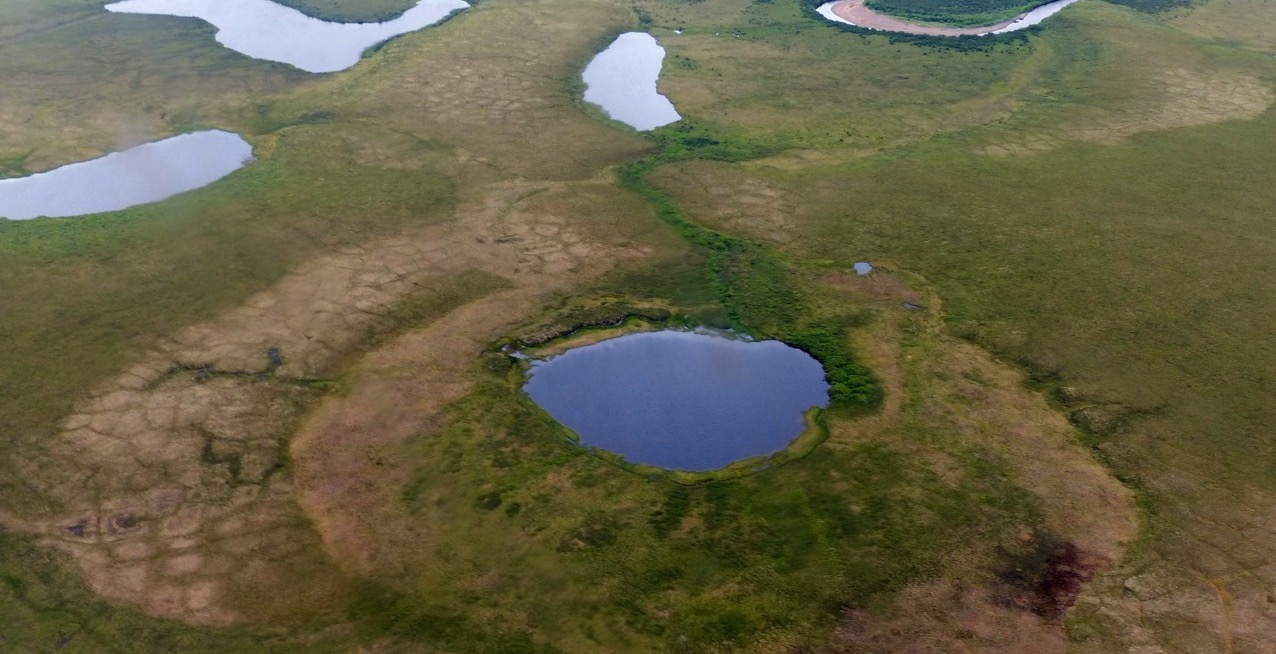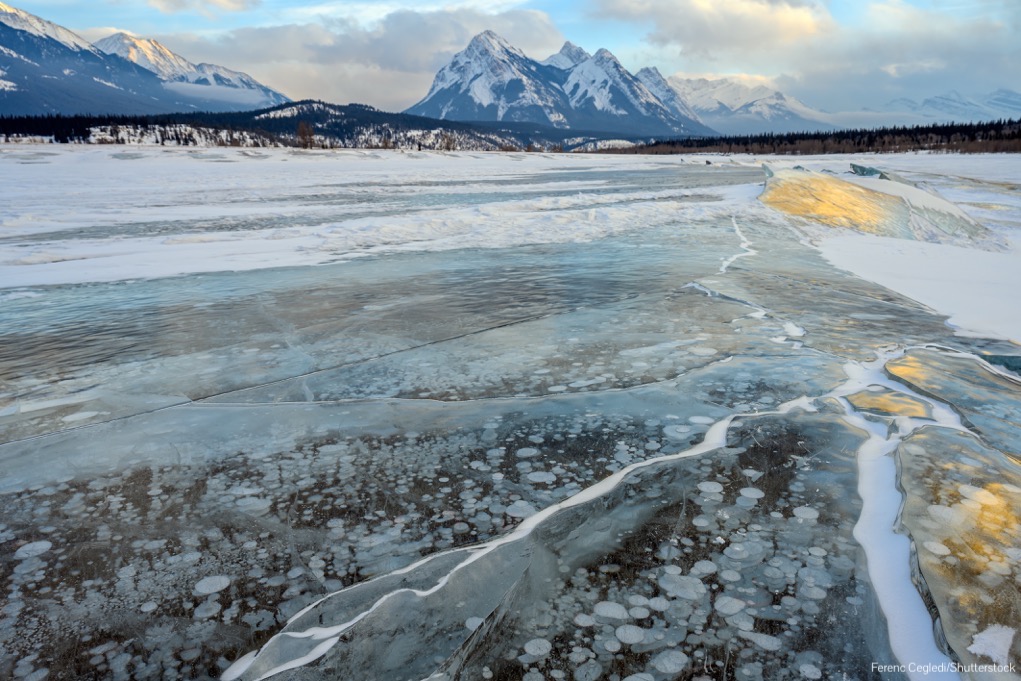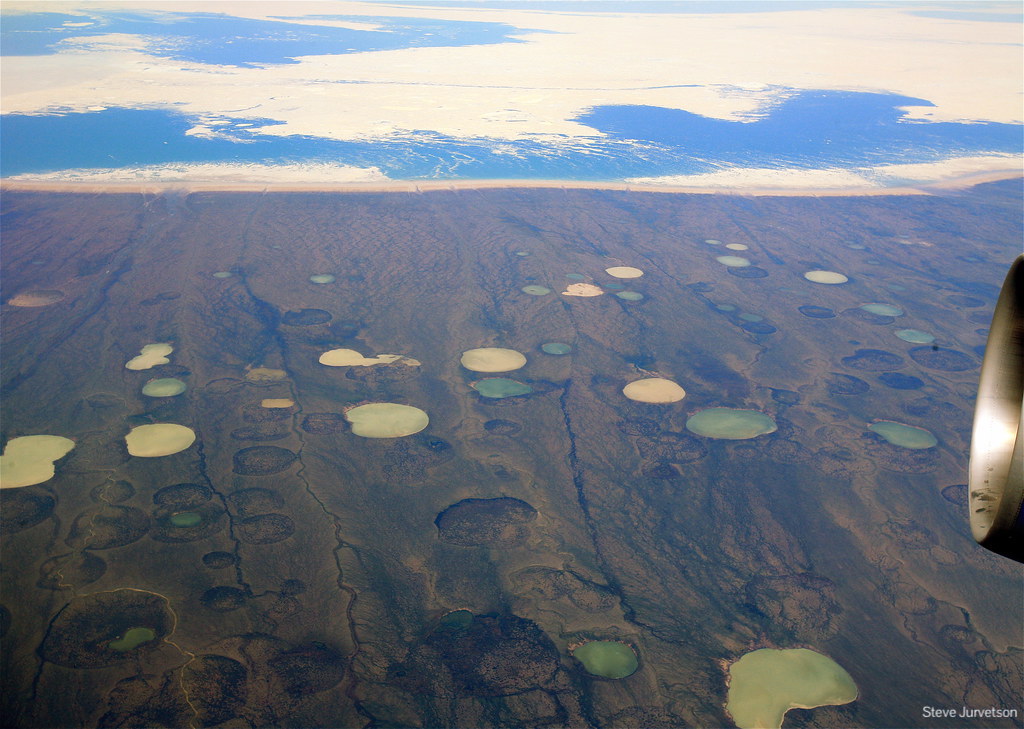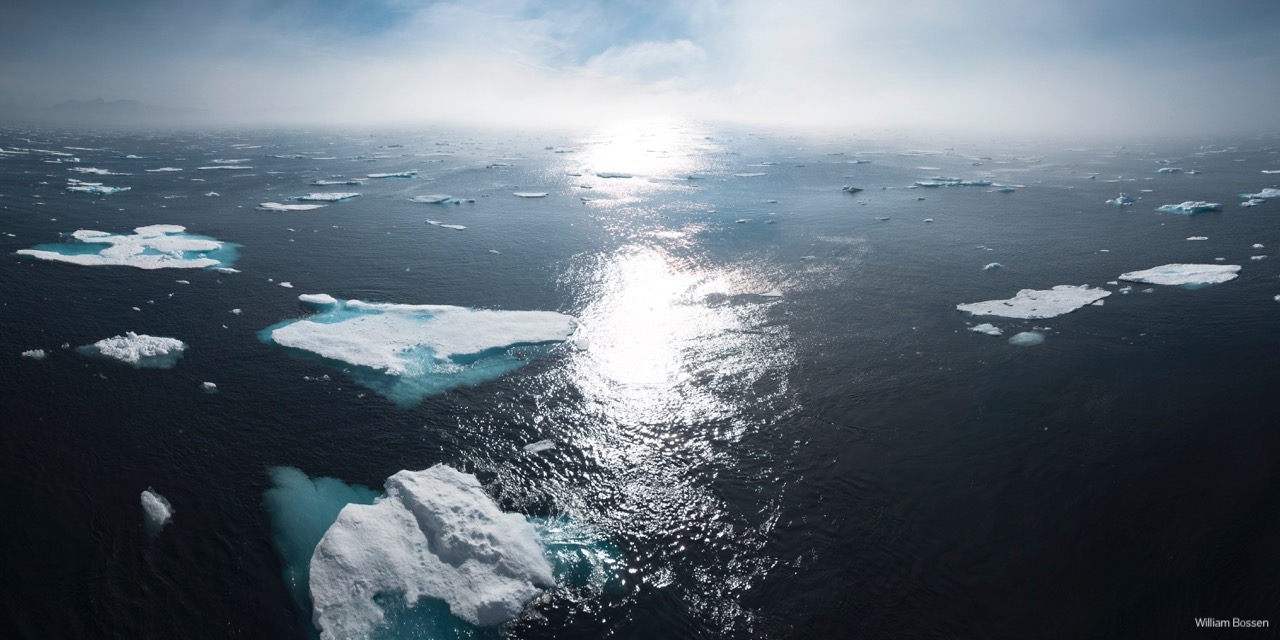
US Geological Survey
Potential ‘surprises’ could accelerate climate change
There are possible ‘surprises‘ that could amplify climate change and its impacts, causing a crescendo of catastrophic changes to our planet.
Our rising temperatures are causing permafrost to thaw and release carbon dioxide and methane into the atmosphere.
Permafrost contains almost twice the amount of carbon that exists in Earth’s atmosphere.
Permafrost is any permanently frozen ground that stays frozen for 2 years or more, with about 25% of land in the northern hemisphere comprising permafrost. It is found in Siberia, northern Canada, Alaska and Greenland; northern territories that are the fastest warming regions on Earth.
But the permafrost is thawing .. and as it does so carbon dioxide and methane are being released into the atmosphere after being stored in the ground for tens of thousands of years. Methane is over 30 times as powerful as carbon dioxide at warming the atmosphere.

Methane is also bubbling up in some Arctic lakes as temperatures rise. Here you can see trapped methane bubbles held in a frozen lake.
This release of carbon dioxide and methane has already started and must be limited before it goes too far.
The only way to limit this is to stop temperatures rising too high, otherwise this release of carbon dioxide and methane will accelerate rapidly.
If it does so, then potentially once we ‘eventually’ ‘turn off’ our ‘oil, coal and gas’ fossil fuel ‘tap’, we may find that the ‘permafrost carbon dioxide methane’ ‘tap’ has taken over.

This image shows permafrost thaw ponds in Hudson Bay, Canada, near Greenland, where permafrost has thawed and thermokarst ponds and lakes have then formed as the ground subsided.
Permafrost could release up to 175 billion tonnes of carbon into Earth’s atmosphere this century.
That’s over 15 years worth of current fossil fuel emissions!
Temperatures would spiral.
And alarmingly in May 2020, Siberia had an extreme heatwave, reaching up to 30°C in one location where normally it would be 0°C!!!
Such extreme temperatures will obviously increase the speed at which permafrost is thawing and cause the release of more carbon dioxide and more methane, which in turn will raise temperatures higher still, causing the release of even more carbon dioxide and even more methane in an escalating cycle. It is called a positive feedback loop. The process ‘feeds on itself’ causing it to increasingly escalate.
Scientists fear this could cause Earth’s temperature to rise even faster than currently expected.

Another ‘surprise’, as the world warms, could be the abrupt and rapid warming of Greenland and the Arctic ocean, as occurred 11,500 years ago when temperatures suddenly rose 10°C in 10 years!
Rapid ice melt and sea level rise would follow.
Additionally the white surface of ice radiates the sun’s heat back into space but if the ice melts, the darker ocean surface absorbs more of the heat.
This will cause the Earth to warm faster still – another positive feedback loop – as more ice melts, more dark surfaces are exposed which absorb more heat, increasing temperatures further….in an escalating cycle.
